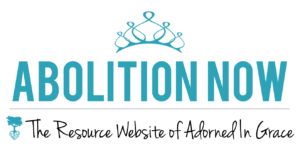
She’s just a street kid, trying to make it another day on her own. Suddenly, she finds herself cornered by two large men and a van. There is nowhere to run.
As she struggles with her abductors, it’s obvious that the self-protective moves she’s learned on the street are not enough to escape. They stuff a fist in her mouth to muffle her screams. She is about to become another victim.
But help comes from an unexpected place. A group of other homeless teens saw the struggle and couldn’t just stand by. Together they are enough to break her free and run for their lives. Her close brush with trafficking was frighteningly usual to them all. Too many girls have simply disappeared before.
The “Tell Me Why” Series–Part Two
One of the most common questions we are asked once people are confronted with the reality of human trafficking is, “why?” How did it get to this point? How have the statistics grown so shockingly large? The purpose of this series is to highlight some of the contributing factors that leave children, teens, and even young adults vulnerable towards being trafficked. As always, it is never our goal to simply point out flaws in any system or organization, but rather to point towards realistic, redemptive solutions.
She’s just a street kid, trying to make it another day on her own. Suddenly, she finds herself cornered by two large men and a van. There is nowhere to run.
As she struggles with her abductors, it’s obvious that the self-protective moves she’s learned on the street are not enough to escape. They stuff a fist in her mouth to muffle her screams. She is about to become another victim.
But help comes from an unexpected place. A group of other homeless teens saw the struggle and couldn’t just stand by. Together they are enough to break her free and run for their lives. Her close brush with trafficking was frighteningly usual to them all. Too many girls have simply disappeared before.
This is the true story of one girl, but hundreds of others have been silenced because there was no one there to rescue them. “I know it’s just a part of life,” she has told one mentor. “I walk all night because I’m afraid to sleep.”
Studies estimate that within the first forty-eight hours on the streets, a homeless teen will be approached by at least one trafficker. Whether this is a direct confrontation, such as an abduction, or a more underhanded, manipulative contact, these teens are obviously targets. Yet to the outside world, once these teens take to the streets, they become nearly invisible. Sixty-three percent of runaway or homeless youth are never reported missing or sought after by parents or guardians. “The majority of homeless youth have suffered from physical, emotional or sexual abuse before leaving home. Some youth end up homeless because they are literally abandoned by their parents. The stark reality may be the streets are safer than their former living environments,” says Transitional Youth, one organization serving this at-risk population.
Currently there are around 20,000 homeless youth within the state of Oregon. It’s estimated that each year, nearly two million people under the age of 18 will experience homelessness at some point. When discussing the contributing factors that leave youth vulnerable to trafficking, it’s obvious that homelessness is a biggie. Once on the streets, these youth lose nearly all of the protective barriers that others enjoy daily—family structure and accountability, friendships, academic support, even basic necessities such as food and shelter. They are starting from literally nothing.
Trafficking and abuse comes in many forms as well. It is not uncommon for another adult to take advantage of these teens, offering a place to sleep for the night, but requiring sexual privileges in return. This is often termed “survival sex.” One study reports that, “traffickers [would] loiter in areas where homeless youth are known to gather and then tell them that the shelters are full and offer them a place to stay in lieu of sleeping on the streets… What started initially as survival sex frequently turned into coercive and violent trafficking experiences.”
Like many other trafficking situations, homeless youth are also vulnerable to the manipulation of pimps. Girls especially feel the need for protection out on the streets, and value a “boyfriend” who offers to help them out. “The victims explained how pimps sought out homeless and runaway youth, often masquerading as boyfriends who promised to care for them, and waited until the youth were dependent on them, before they began using violence, threats and sexual assault to compel prostitution.” Several even report being held at gunpoint, forced into cars, and driven into other states and countries. One girl also put it this way, “…I used to think I would never be one of those girls (a stripper), but when you’re 17, it’s hard to get a job with no address. What do you write for your address on the job application—the corner?” The need for employment will force many homeless youth into the only option they know.
So what hope is there for these extremely vulnerable youth?
The video “Someone to Be Proud Of” on the website of Portland-based New Avenues for Youth answers this question beautifully. In the video, one youth tells her story of growing up homeless and feeling completely inadequate to get a job or go anywhere in life. However, she got connected with a New Avenues program called Promoting Avenues to Employment (PAVE). There she received job training, assistance with resumes and college applications, and eventually went on to receive a full-ride scholarship to Marylhurst University.
New Avenues for Youth’s mission is “to work in partnership with our community to prevent youth homelessness and provide homeless and at-risk young people the resources and skills needed to lead healthy, productive lives.” They focus on three specific aspects: “Engage” revolves around providing food, clothing, showers, and transitional housing as a way to initially contact youth and meet their basic needs. “Educate” includes media/arts classes and an alternative high school where students can receive additional assistance and tutoring. “Empower” is where youth receive job training, college application assistance, and job placement in various partnering enterprises. If you have ever stopped by at Ben & Jerry’s Pioneer Square location, for example, you have unknowingly created a further job opportunity for homeless and at-risk youth.
New Avenues for Youth began in 1997 with the belief that “we must go beyond meeting basic needs and offer programs that heal young lives and foster growth and independence. “ Providing necessities like food and shelter will certainly keep some teens from turning to survival sex for the night, but the deeper need of these youth is so much greater. They need to discover that they are uniquely valuable children of God, that their lives are not invisible, and that they have something important to offer to the world. Only then will they have enough hope to leave their lifestyle of homelessness or abuse, and step into a life of healing.
YOU can make a difference in these teen’s lives in so many ways as well. Donate a sleeping bag and keep one more youth from turning to survival sex for the night. Volunteer in their Day Services Center or become a tutor. Stop by Ben & Jerry’s while you’re downtown, and keep another youth employed in a job that treats them honestly and fairly. The opportunities are endless—and the need is great.
To see a list of current donation needs for New Avenues for Youth, click here.
To look at ways to volunteer and get involved, click here.
To see a list of PAVE partnering businesses you can support, click here.

